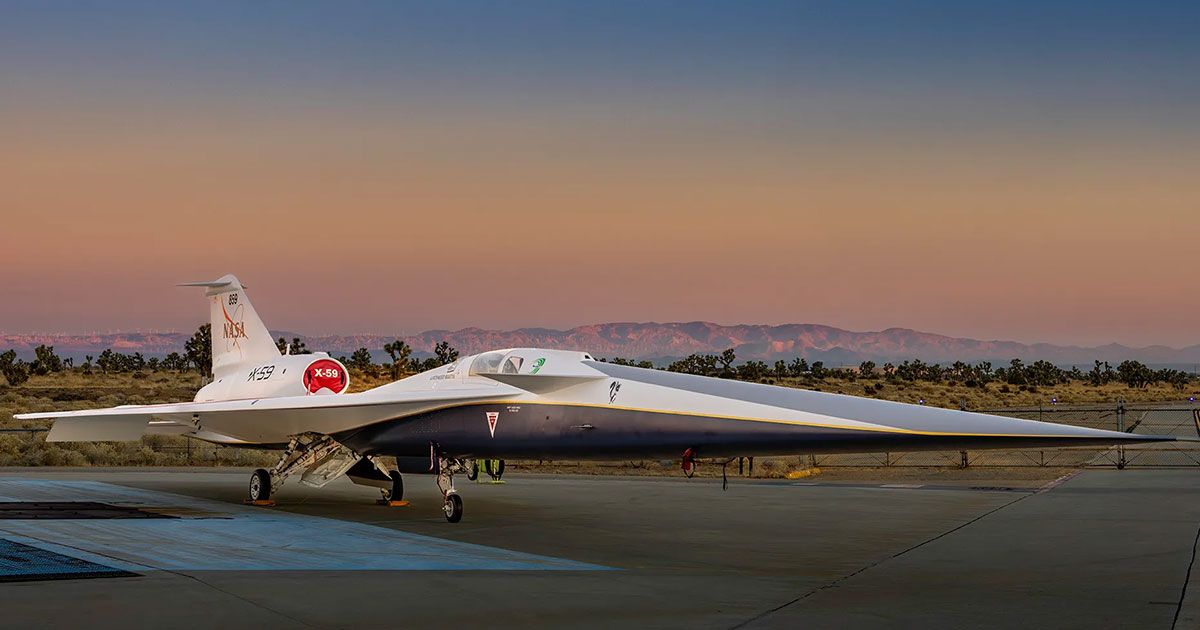NASA, Lockheed revive supersonic travel dreams with X-59 QueSST aircraft
15 Jan 2024

US space agency NASA and defence aircraft maker Lockheed Martin on Friday jointly unveiled a prototype of the agency’s experimental aircraft X-59, marking a significant leap towards a new generation of commercial aircraft that can travel faster than the speed of sound.
NASA will use this one-of-a-kind quiet supersonic technology experimental airplane to gather data that, it says, could revolutionise air travel.
NASA rolled out the X-59 experimental test aircraft (QueSST) in a joint ceremony at Lockheed Martin Skunk Works in Palmdale, California, on 12 January. The aircraft with cutting-edge features, is designed to reach speeds 1.4 times that of sound, equivalent to an impressive 925mph (1,488 km/h).
The conclusion of the X-59’s construction marks the commencement of the countdown to its first flight.
The sleek X-59 features a thin, tapered nose, which constitutes almost a third of the aircraft’s total length. This long tapering nose is engineered to disperse shock waves that typically create disruptive sonic booms around supersonic planes.
The aircraft’s cockpit is positioned almost halfway down the length, with no forward-facing windows that are common in traditional aircraft.
The X-59’s top-mounted engine and smooth underside are also intended to minimise the impact of sonic booms.
“This is a major accomplishment made possible only through the hard work and ingenuity from NASA and the entire X-59 team,” NASA deputy administrator Pam Melroy said. “In just a few short years, we’ve gone from an ambitious concept to reality. NASA’s X-59 will help change how we travel, bringing us closer together in much less time,” he added.
The X-59 project, started in 2016, targeted its first flight in 2020. However, the project got delayed due to various technical challenges, forcing the QueSST team to reschedule the maiden flight to 2024.
NASA has said that the successful completion of initial flight testing will mark the conclusion of the first of the three phases of the QueSST project.
The second phase of the QueSST programme would focus on validating the core design through flights in the supersonic test range over Edwards Air Force Base.
During the third phase, which is more of a community response study, the X-59 will undertake flights over various locations in the United States.
During this phase, feedback will be sought from individuals in the communities overflown, providing valuable insights into the public’s response to the aircraft’s noise characteristics.
The third phase is projected between 2025 and 2026, but the specific communities earmarked for this stage remain undisclosed.






















